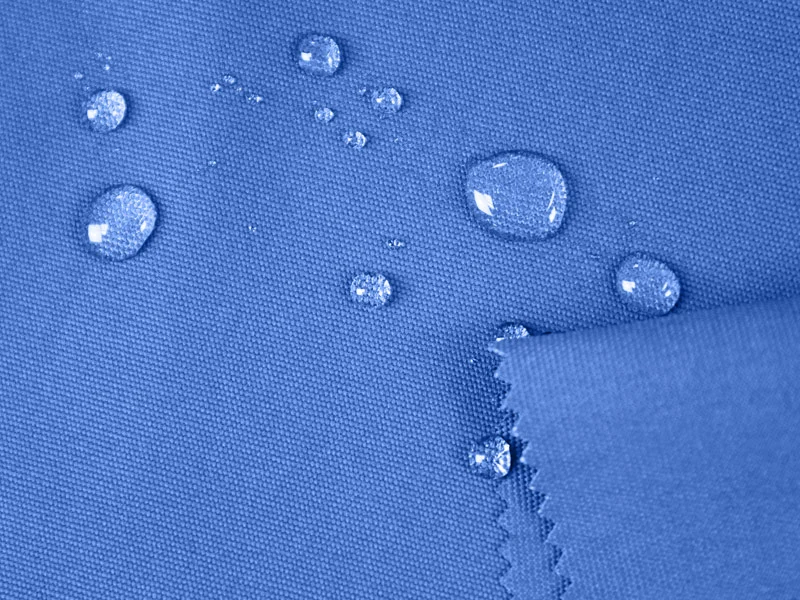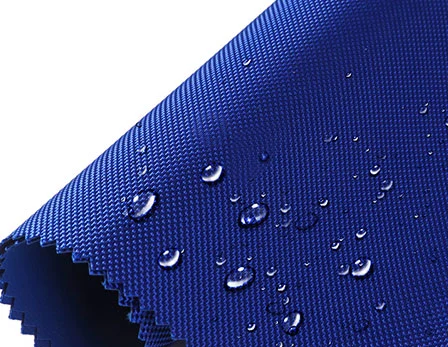Water resistant fabrics have become a modern marvel in our quest for comfort and protection against the elements. Water-resistant fabrics, from raincoats to tents, keep us dry and warm. But what exactly are water-resistant fabrics, how do they work, and what benefits do they offer? This comprehensive guide will take you through the nitty-gritty of everything water-resistant fabrics, shedding light on different types, their applications, and how to care for them.
Water-resistant fabrics are no longer just about function; they’ve woven their way into the fashion industry and beyond, with advancements in textile technology making them more innovative and durable.
Understanding Water-Resistant Fabrics
Imagine wearing a protective shield that is lightweight, breathable, and yet resilient against the most determined of water droplets. This is essentially what water-resistant fabrics offer. They are specially engineered textiles that prevent water penetration, keeping the wearer dry and comfortable.
The Science Behind Staying Dry
The water resistance of a fabric is often determined by its hydrostatic head, which measures how tall a column of water can be before the fabric begins to allow water through. This is why you might hear specifications like ‘waterproof up to 10,000mm’. On the molecular level, the fabric’s construction and finishing treatments repel water due to their hydrophobic—water-fearing—qualities.

Types of Water-Resistant Fabrics
Not all water resistance is created equal, and various fabrics have different levels of repellency and functional characteristics.
The Heavy-hitters:
Gore-Tex: A household name in the waterproof fabric game, Gore-Tex is known for its exceptional breathability while being completely waterproof.
Nylon: Synthetic polymers that are water-repellent by nature, nylon is often coated for enhanced resistance.
Polyester: Similarly to nylon, polyester has a natural resistance to water but can be treated to increase its effectiveness.
The Newcomers:
Innovations in textile engineering have brought forth fabrics like eVent, known for elevated breathability without compromising water protection, and Polartec NeoShell, which pushes the envelope of stretch and ventilation.
Benefits of Water-Resistant Fabrics
What makes water-resistant fabrics so advantageous? Here, we break down their primary benefits.
Protection from the Elements
The most obvious reason to opt for a water-resistant fabric is to keep it dry. Whether a drizzle or a heavy downpour, an excellent water-resistant fabric can make all the difference.
Durability
Water-resistant fabrics are often better equipped to handle environmental wear and tear. They resist staining and can often be more robust against damage.
Versatility
With the ability to craft lightweight, packable garments and gear, water-resistant fabrics offer usability across various activities and environments.
Applications in Various Industries
The reach of water-resistant fabrics extends well beyond your waterproof jacket. Their utility is vast and varied, making an impact in different sectors.
Outdoor Gear
From hiking to kayaking, water-resistant fabrics are the backbone of outdoor equipment. Tents, backpacks, and shoes all benefit from using these textiles.
Fashion
The fashion industry has embraced the functionality of water-resistant fabric, leading to trendy, weather-appropriate apparel.
Medical Textiles
In healthcare, the need for resistance to various bodily fluids calls for water-resistant textiles, ensuring hygiene and protection.
How to Care for Water-Resistant Fabrics
Even the best water-resistant fabric can lose effectiveness if not properly cared for. Here’s how to maintain your gear’s water resistance.
Cleaning Tips
- Regular Washing: Use a mild detergent and avoid harsh chemicals that can strip the fabric’s water-repelling coatings.
- Restoring DWR Finishes: Durable Water-repellent (DWR) coatings can be reinvigorated with sprays or wash-in treatments.
Maintenance Practices
- Tumble Dry Low: Heat-activated DWR treatments work best with mild heat after washing.
- Avoid Abrasion: Rough handling can wear down fabric and coatings, reducing water resistance.
Top Brands and Products
Here’s a rundown of some frontrunners for those searching for the best water-resistant textiles.
Leaders in Water-Resistance
- Gore-Wear: Known for its cutting-edge waterproof-breathable solutions.
- The North Face: A pioneer in using water-resistant fabrics for outdoor clothing and equipment.
- Under Armour: Merging innovative textile technologies with sporty aesthetics.
Water-Resistant Fabrics FAQs
How waterproof is the water-resistant fabric?
The level of waterproofing can vary widely—some fabrics can repel a light shower, while others can keep you dry in a monsoon.
Are water-resistant and waterproof fabrics the same?
They are similar but have different designations based on their ability to resist water penetration, with waterproof fabrics offering a higher level of protection.
Can you make a fabric that is water-resistant at home?
Yes, there are DWR treatments available for home use that can enhance the water-repelling capability of certain fabrics.
How often should you reapply DWR to outdoor gear?
This depends on usage and care, but a good rule of thumb is to reapply DWR every few months or after several washes.
Conclusion
Water-resistant fabrics are more than just a convenience; they represent a harmonious blend of functionality and comfort. Versatile and advanced, they stand as a testament to human ingenuity in creating materials that work with—and improve upon—the natural world. With our guide, you can now make informed decisions about the water-resistant fabrics that safeguard you against rain and keep you looking great in any weather. Stay dry, stay stylish, and most importantly, stay informed. In the world of water-resistant fabrics, there’s always something new to discover, and the future promises more resilient and sustainable fabrics.

[…] Exploring Water Resistant Fabrics: A Guide […]